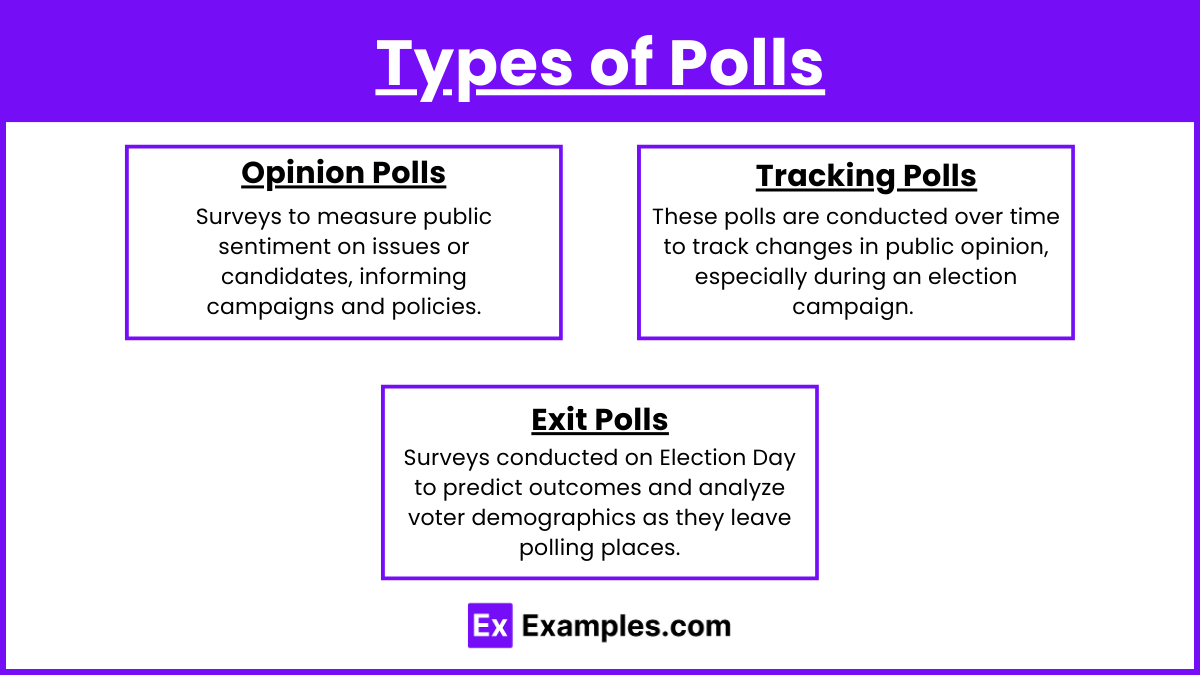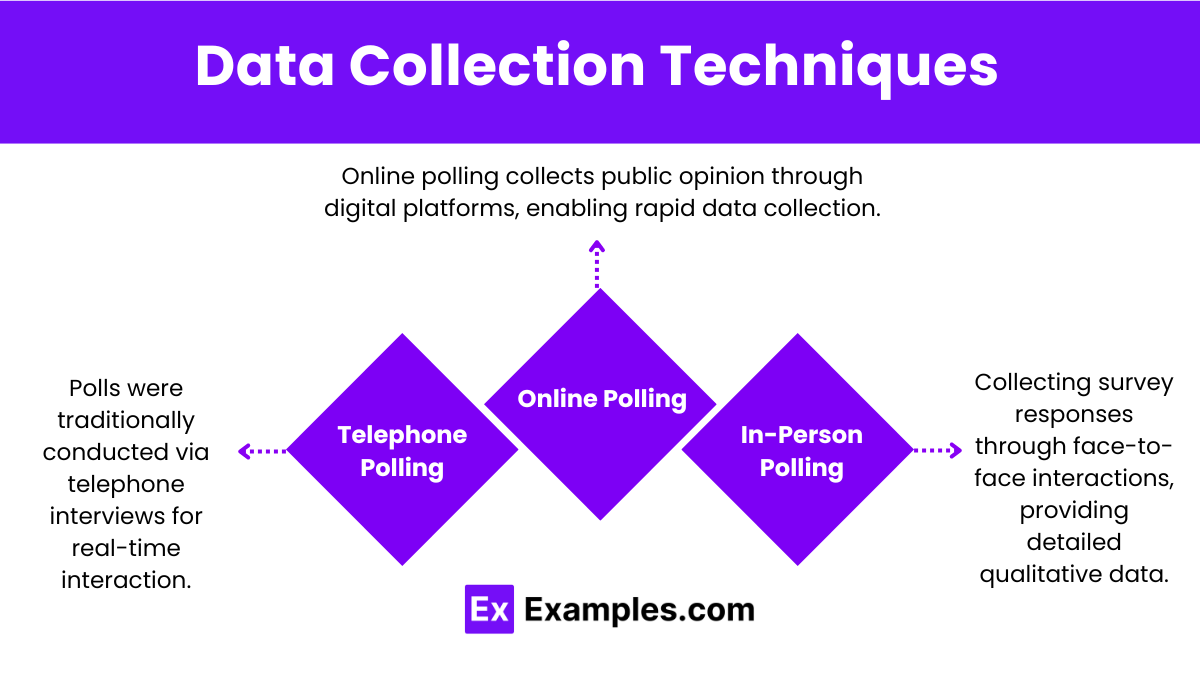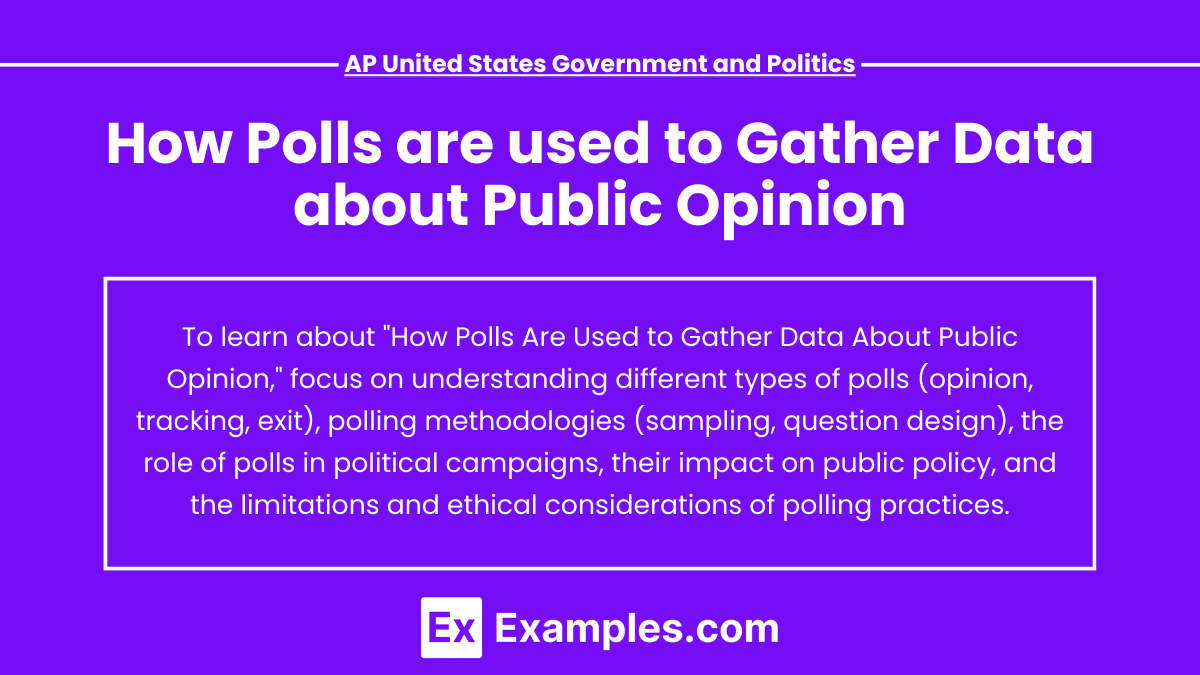Polls are essential tools for gauging public opinion, offering insights into how citizens feel about political issues, candidates, and policies. By employing various methodologies, such as random sampling and question design, polls can provide valuable data that influence political strategies and public policy decisions. Understanding the types of polls, their methodologies, and their implications is crucial for analyzing their role in democracy. Ultimately, polls reflect the voice of the public, shaping the political landscape in significant ways.
Learning Objectives
In studying “How Polls Are Used to Gather Data About Public Opinion” for the AP United States Government and Politics exam, students will learn to identify different types of polls, including opinion, tracking, exit polls, and focus groups, and understand their specific purposes. They will analyze the methodologies used in polling, focusing on sampling techniques, question design, and the importance of avoiding bias. Students will also evaluate the impact of polling on political campaigns and public policy decisions, recognizing how polling data can shape voter perceptions and influence legislative priorities. Additionally, they will develop critical thinking skills to assess the reliability and limitations of polls, including factors that can lead to misinterpretation of data, and understand the ethical considerations surrounding polling practices in a democratic society.
Polls are a crucial tool for measuring public opinion, providing insights into how individuals feel about various political issues, candidates, and policies.
1. Types of Polls

- Opinion Polls: These are designed to gauge public sentiment on specific issues or candidates. They can be conducted at any time and are often used to inform political campaigns and policy decisions.
- Tracking Polls: These polls are conducted over time to track changes in public opinion, especially during an election campaign. They provide a dynamic view of how opinions evolve.
- Exit Polls: Conducted on Election Day, exit polls survey voters as they leave polling places to predict election outcomes and understand voter demographics.
2. Methodology

- Sampling: Polls rely on a representative sample of the population. A good sample accurately reflects the demographics of the larger population, including factors like age, race, gender, and socioeconomic status.
- Random Sampling: This method ensures that every individual has an equal chance of being selected, reducing bias and enhancing the poll’s validity.
- Margin of Error: This statistic indicates the potential inaccuracy of a poll’s results. A smaller margin suggests a more reliable poll, while a larger margin indicates greater uncertainty.
3. Data Collection Techniques

- Telephone Polling: Traditionally, many polls were conducted via telephone interviews, allowing for real-time interaction.
- Online Polling: With advancements in technology, online surveys have become increasingly popular, allowing for faster data collection and broader reach.
- In-Person Polling: While less common, face-to-face interviews can provide rich qualitative data, particularly in focus groups.
Examples
Example 1 : Election Forecasting
Polling data is heavily utilized during election seasons to forecast outcomes. Opinion polls gauge voter preferences for candidates, helping campaigns strategize and allocate resources effectively. For instance, polls conducted weeks before an election can show which candidate is leading, allowing parties to adjust their messaging or target specific voter demographics.
Example 2 : Issue Awareness and Prioritization
Polls help identify which issues are most important to the public at any given time. For example, a survey might reveal that healthcare and the economy are top concerns for voters. This information guides politicians and policymakers in prioritizing legislation that aligns with public interest, ensuring that elected officials address the most pressing issues.
Example 3 : Tracking Public Sentiment
Tracking polls provide insights into how public opinion shifts over time, especially in response to events or policies. For example, following a significant policy change or national crisis, tracking polls can indicate whether public support for the government or specific measures is rising or falling, allowing leaders to respond accordingly.
Example 4 : Assessing Policy Support
Polls are used to measure public support for specific policies, such as healthcare reforms or tax changes. By asking respondents whether they favor or oppose particular proposals, policymakers can gauge potential challenges and public backing, informing their legislative strategies and decisions.
Example 5 : Understanding Demographic Differences
Polls often analyze how different demographic groups view political issues. For instance, surveys may show that younger voters prioritize climate change while older voters focus on social security. Understanding these differences helps candidates tailor their messages and campaigns to resonate with various segments of the population, ultimately enhancing voter engagement and turnout.
Multiple Choice Questions
Question 1
What type of poll is conducted to track changes in public opinion over time?
A) Opinion Poll
B) Tracking Poll
C) Exit Poll
D) Focus Group
Correct Answer: B) Tracking Poll
Explanation: Tracking polls are specifically designed to monitor changes in public opinion over time. They are conducted repeatedly with the same or similar questions to assess how opinions shift in response to events, campaigns, or issues. Unlike one-time opinion polls, tracking polls provide insights into trends and can help predict election outcomes.
Question 2
Which of the following best describes the purpose of exit polls?
A) To predict election outcomes before results are officially announced
B) To assess public opinion on specific policies
C) To evaluate the effectiveness of campaign strategies
D) To analyze demographic differences in voting behavior
Correct Answer: A) To predict election outcomes before results are officially announced
Explanation: Exit polls are conducted on Election Day as voters leave polling places. They aim to gauge how different demographics voted and to predict the overall election outcome. By sampling voters’ choices immediately after they vote, exit polls provide early insights into electoral trends and results.
Question 3
What is a significant limitation of polls when measuring public opinion?
A) They can be conducted online or via telephone.
B) They may suffer from response bias.
C) They always provide accurate results.
D) They are not influenced by media coverage.
Correct Answer: B) They may suffer from response bias.
Explanation: A significant limitation of polls is the potential for response bias, where the way questions are phrased or the sample population may influence the answers given. For example, if questions are leading or if certain demographics are overrepresented, the results may not accurately reflect true public opinion. Understanding these limitations is crucial for interpreting poll data effectively.


